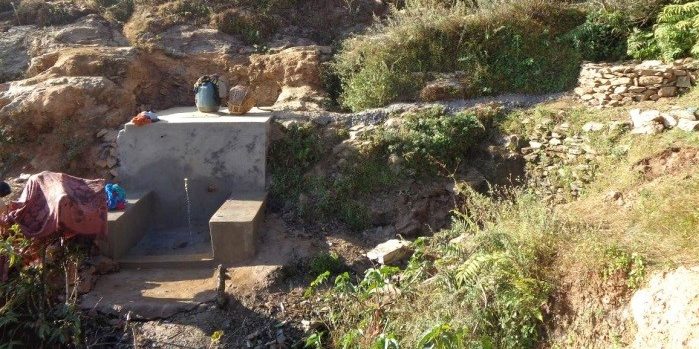
In Nepal, the catchment areas of water sources are largely unprotected from human activities and the effect of climate change, which both have a direct impact on water resources. The people in rural area of Nepal are facing problems of source pollution, source depletion and water user conflicts. The Water Resources Management Programme (WARM-P) of HELVETAS Nepal identifies vulnerable water resources during Water Use Master Planning (WUMP) and implements source conservation activities for the spring revival and Recharge, Retention and Reuse (3R). The vegetative and structural measures are applied at the source, its immediate vicinity and in the wider catchment area.
Spring revival and 3R measures include barbed wire fencing around intake, dead fencing or live fencing (plantation of shrubs, bushes and trees, preferably thorny plants) in the wider area. In the catchment area, spring revival includes plantation of shrubs and trees to increase soil stability and infiltration and soil-moisture retaining capabilities, contour and eyebrow trenches to reduce surface flow velocity, promote infiltration, gully plugging and check dams, drainage ditches to divert storm surface water runoff, recharge ponds etc. Source discharge monitoring has been done in regular intervals for a longer time period.
A Baspani spring revival and 3R scheme in Dullu Municipality of Dailekh is one of the success stories implemented by WARM-P. As local people were facing the problem of water source depletion, all the activities mentioned above for the spring revival and 3R have been implemented for conservation of the Baspani water source with a top priority as part of the WUMP. Moreover, source improvement structure, a masonry tank to collect water from its immediate surroundings and a concrete tap platform to provide clean and convenient water access, has been constructed (Figure 1). The result of spring discharge monitoring of the last two years revealed gradual increments on spring discharge.
Figure 1: A source improvement structure - a water tank and a concrete tap platform to provide clean and convenient water access
